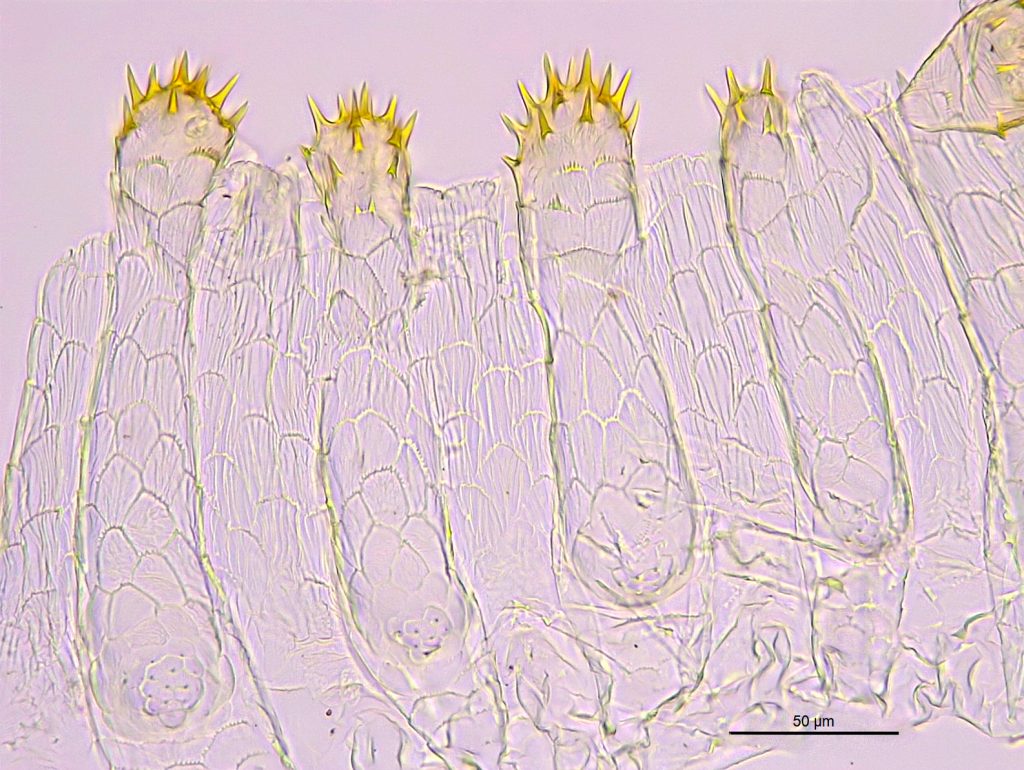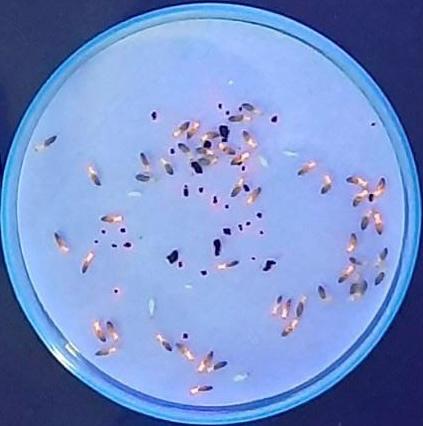Research projects
Apicotermitinae from the Americas
Apicotermitinae (Blattaria, Isoptera, Termitidae) from the upper Madeira River region, Rondônia, Brazil: taxonomy and dimensions of diversity

The termite subfamily Apicotermitinae (Termitidae) is extremally abundant in neotropical soils. Besides that, this subfamily is the less known group among termites, being the highest taxonomic challenge in the Termitology. The aim of this project is to contribute to the state of knowledge of the neotropical Apicotermitinae, especially in the Amazon. We will study 2.553 samples collected in the upper Madeira River (Porto Velho, RO, Brazil), giving emphasis to the taxonomy and multiple dimensions of diversity of the group. The taxonomic identification of taxa will use external and internal morphology, as well as morphometric analysis. New taxa will be described along the project. Alfa, beta, gamma and phylogenetic dimensions of diversity will be analyzed to understand different patterns and process driving the Apicotermitinae communities. Our main hypothesis is that soil variables and the edge effect created by the riverbanks will drive the diversity patterns of the group. The combination of phylogenetic and ecological data with a deep taxonomic study will reciprocally illuminate these disciplines. This multidisciplinary approach is the core of science today, especially in areas with such a knowledge gap, like the case of the new world Apicotermitinae. This project also seeks to train qualified people to work with termite taxonomy and diversity, as well as the structuring of the TermitoLab, at UFABC.
Responsible: Tiago Carrijo
Support: FAPESP
Consequences of soldier loss for social immunity in termites (Isoptera: Termitidae)

The soldier caste is a synapomorphy in Isoptera. These individuals are primarily responsible for colony defense and seem to act in the colonial immune defense against pathogens. Some species have lost the soldier caste, and doubts concerning the development of the immune system and how these species deal with pathogens without soldiers make the neotropical Apicotermitinae an excellent study model. The present study aims to comprehend the role of soldiers in the evolution of the social immunity in termites. Therefore, two termite species will be compared: Silvestritermes euamignathus, which possesses soldiers with physical and chemical defense, and Anoplotermes pacificus, which is a soldierless species, in order to answer the following questions: 1. What is the contribution of soldiers in the behavioral repertoires involved in social immunity in termites with physical and chemical defenses?; 2. What behavioral activities are associated with the social immunity in termites that lost the soldier caste?. Individuals of both species will be infected to the fungi Metarhizium anisopliae and placed in experimental arenas for behavioral observation. The experimental analysis includes the quantification of behaviors such as grooming, attack, dismembering, or other observed behavior between the other members and the infected nestmate. Data will be analyzed using general mixed-effect models. At the end of this study, it is expected to understand the behavioral strategies adopted by the two species of neotropical termites against the pathogen and the role of soldiers in the evolution of the social immune system in termites.
Responsible: Ives Haifig
Team: Alberto Arab, Christian Jost, Dino McMahon, Luiza Helena Bueno da Silva,
Tiago Carrijo, Vincent Fourcassié
Support: FAPESP
Termites in a World of Climate Change: An Ecological, Functional, and Molecular Approach

Climate change is affecting biodiversity on the planet, especially in the case of termites, as these organisms cannot quickly move to more suitable locations, affecting the distribution of species and their ecosystem functions. Considering the projected increase in temperature and the intensity of extreme weather events, the general objective of this proposal will be to investigate how neotropical termite species respond to rising temperatures and reduced humidity in different types of environments and which functional attributes are related to the climatic tolerance of these insects. The proposal will be divided into two sub-projects, where the following will be investigated: 1) the thermal tolerance of a savanna termite species, evaluating which sets of morphological and functional attributes of this termite species are most influenced by the climatic conditions of the nest collection site, and 2) how termites from forests and savannas respond to increased temperature and desiccation, and whether this response is related to morphological and/or functional attributes. According to the climate variation hypothesis, the climatic tolerance of organisms is related to the magnitude of changes in environmental variables. Therefore, it is expected that: i) termites from regions with higher average ambient temperatures will have higher levels of thermal tolerance, and ii) termites from savannas will exhibit greater tolerance to high temperatures and desiccation than species inhabiting the interior of forests where temperature and humidity conditions are more stable. A better understanding of termite responses to rising temperatures will have significant implications for ecosystem conservation in the context of climate change.
Responsible: Alberto Arab
Team: Alberto Arab, Ives Haifig, Ana Maria Costa-Leonardo, Luciana Campos Paulino, Danilo Trabuco Amaral. João Paulo Franco-Cairo, Maria Avany Bezerra-Gusmão
Support: FAPESP
Outreach projects

Wikitermes: deu cupim na rede!
Wikitermes aims to do scientific divulgation using termites. Our goal is to disseminate the biology and importance of these insects through online platforms: the website Wikitermes, Facebook, Instagram , Twitter and Youtube.
Responsible: Tiago Carrijo
Support: ProEC-UFABC
